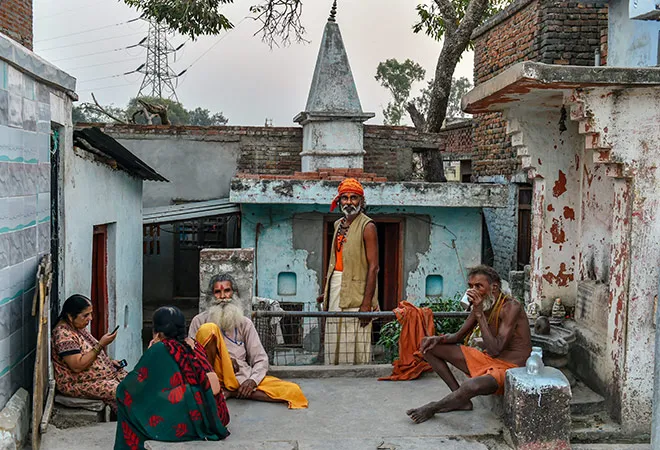
The Supreme Court has now decided on the long-running title suit at Ayodhya. As a matter of law, it is probably over. The question is whether, as a matter of politics and of statecraft, it is no longer relevant.
The subdued response to the verdict tells its own story. The political class’s purpose of deferring to the courts in the Ayodhya dispute was to try and apparently depoliticise, through the use of the judicial system, an inherently political question — a tactic used often in the recent history of India. The problem with this tactic is that it is strategically unsound if the long-term aim is to strengthen people’s faith in Indian institutions. Ayodhya was never merely a title suit. It was a claim about dominance, restitution, identity and history. This is the space of politics, and courts are always at a disadvantage pronouncing on it.
Without getting into the details of the judgment, it is clear that it reflects three things. First, the court itself hopes that the secular underpinnings of the Indian state can be shored up in such a way that the only (currently) politically feasible result is implemented and that “secularism” itself is not the ground of dispute. Second, that the court wishes to ensure that its decision can be justified without any reference to specific religious beliefs or ancient archaeological evidence, but evidence of past use and dispute of the site are relevant. And third, that the Indian state’s traditional privileging of the need to ensure public order and tranquility continues to be operative.
On the first point, the court’s words are unequivocal. Part 2, Section 795 of the judgment deserves reading in full, but I shall quote only a part: “The law forms the ground upon which multiple strands of history, ideology and religion can compete. By determining their limits, this Court as the final arbiter must preserve the sense of balance that the beliefs of one citizen do not interfere with or dominate the freedoms and beliefs of another.” On the one hand, this is a worthy attempt to ensure that, first, secularism remains central to how we as Indians interact with each other. But, on the other, the simple fact is that this decision must be in tune, no doubt as much or as little as any other in history, with the political norms of the time. It is interesting that the word “secularism” does not in fact appear in this section, which is otherwise a stirring restatement of constitutional values about freedom of belief and equality before the law.
The second point is where questions will be asked of the judgment going forward. On the relevance of belief, the Supreme Court appears unequivocal: “The dispute is over immovable property. The court does not decide title on the basis of faith or belief but on the basis of evidence.” In fact, the Supreme Court, while interrogating much of the history stated as reasoning underlying the Allahabad High Court decision, has essentially rendered much of it irrelevant to its actual decision. The crucial points, as far as the Supreme Court is concerned, is that the evidence of actual Muslim worship at the site prior to 1860 is weak; and that there are stronger accounts of Hindu worship in the “composite” site. This is not the place to interrogate this finding in detail, and to question for example why revenue and tax records are seemingly placed on a lower probabilistic pedestal than travelers’ accounts, even if neither should be seen as clear evidence of title. But it suffices to say that this finding of fact is eminently contestable, and the main pillar — along with the supposedly “composite” nature of a site that the court itself finds was effectively bifurcated since at least 1856 — of the court’s remedies. The open question is whether this will, as the court hopes, in fact strengthen the appearance of impartiality of India’s institutions.
The third point is also relevant to how the judgment will play out politically. The court, while rejecting the Allahabad High Court’s trifurcation of the site as legally unwarranted, also states that it is politically impractical: “Even as a matter of maintaining public peace and tranquility, the solution which commended itself to the High Court is not feasible. Dividing the land will not subserve the interest of either of the parties or secure a lasting sense of peace and tranquility.” The desire to preserve “tranquility” at all costs is what links the independent Indian state to its colonial predecessor. But the problem is that this is, in the end, a window to the precise politicisation that the Court wishes to avoid as an influence on the workings of justice. What has worked for the winning parties in this case, even in the legal arena, is constant contestation. The history of past contestation is in fact taken as signs of active worship. The demolition of 1992 comes in for harsh words in the judgment, but in the end it is precisely the sort of threat to peace and tranquillity which the Court also explicitly states it must consider when forming its remedies.
Going forward, it seems that the effort by the political class to depoliticise the Ayodhya matter has both succeeded and failed. It has succeeded in that there is now institutional support framed using constitutional principles for what has been for some time inevitable in Indian politics, namely the building of the temple at Ayodhya. It has also, to an extent, succeeded in that politics has moved beyond Ayodhya. The heat has been taken out of the dispute; the open political questions of identity are now more quotidian, involving such things as citizenship and other rights. But it has failed in that segment. This will be seen by both sides as a statement of the new political realities with which we all live.
The views expressed above belong to the author(s). ORF research and analyses now available on Telegram! Click here to access our curated content — blogs, longforms and interviews.




 PREV
PREV


